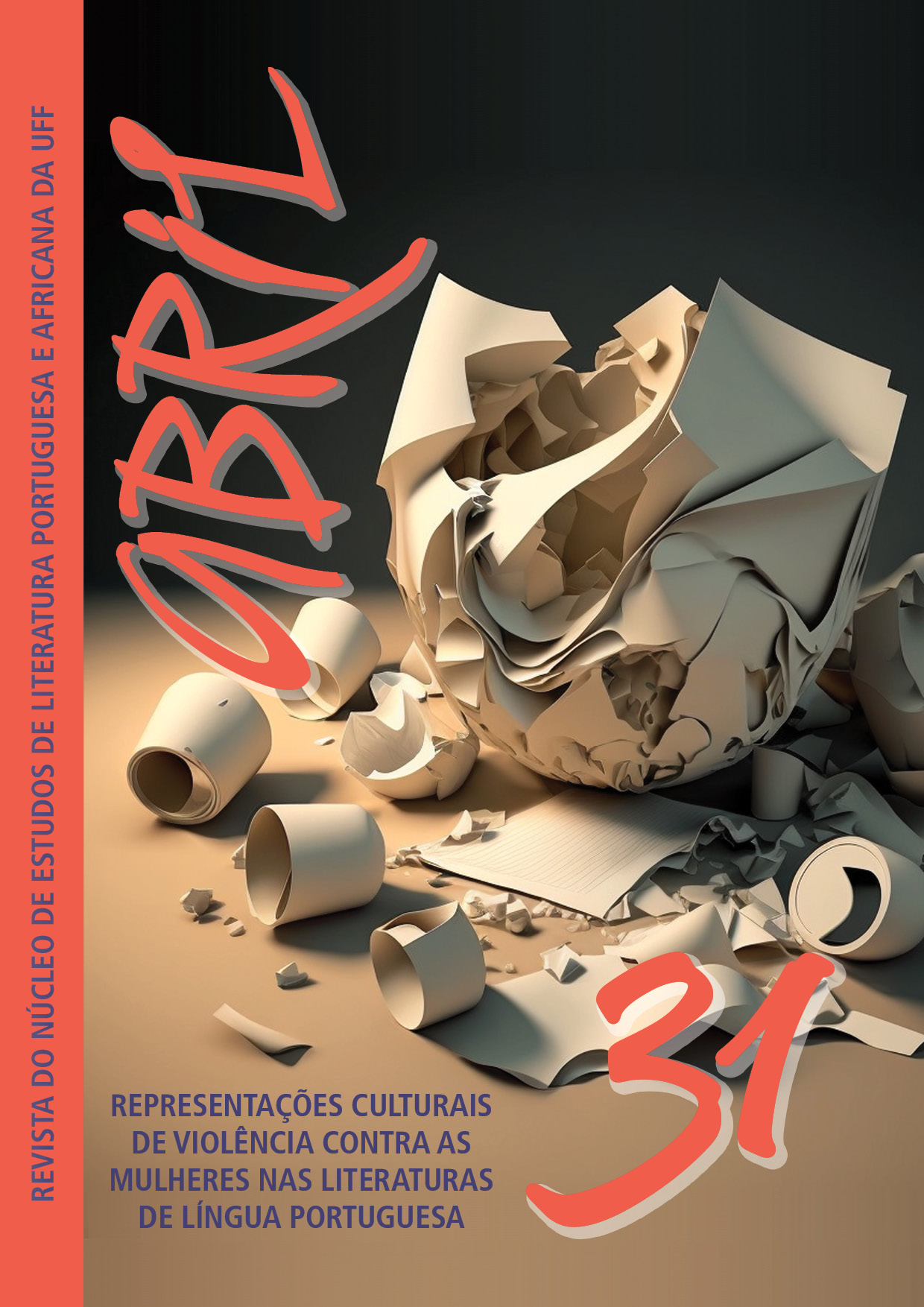Daughters of the diaspora: female bodies and the various forms of violence in Esse cabelo and Essa dama bate bué!
DOI:
https://doi.org/10.22409/abriluff.v15i31.58682Keywords:
Diaspora, Representation, Violence, FamilyAbstract
The possible forms of violence for a subject in diaspora are countless and when limited to the female gender they multiply. Mila and Vitória, characters from Esse Cabelo (2015), by Djaimilia Pereira de Almeida, and Essa dama Bate Bué! (2018), by Yara Monteiro, resize the understanding and the analysis of the violent dynamics that occurred during the period of decolonization in Angola, and later in transit post-colonial in the constituent developments of figurations of stereotypes that accompany their personalities until today. This article aims to analyze, from the stereotypes imposed on mestizo blackness, how the dynamics of colonial representations affect the characters from childhood and in the family environment itself, a space that should refer to security, but ends up being the place of initial projection of the fragmentation of the diasporic subject.
Downloads
References
ALMEIDA, Djaimilia Pereira de. Esse cabelo. Alfragide: Teorema, 2015a.
ALMEIDA, Djaimilia Pereira de. Chegar Atrasado à Própria Pele. Forma de Vida, 05, p. 50-52, 2015b.
ALMEIDA, Djaimilia Pereira de. O que é ser uma escritora negra hoje, de acordo comigo. Serrote, 41, p. 4-21, 2022.
ESPAHANGIZI, Kijan. “When Do Societies Become Postmigrant? A Historical Consideration Based on the Example of Switzerland”. In: GAONKAR, Anna Meera; HANSEN, Astrid Sophie Ost; POST, Hans-Christian; SCHRAMM, Moritz. Postmigration. Art, Culture, and Politics in Contemporary Europe. Bielefeld: Transcript, 2021, p. 57-74.
FANON, Frantz. Pele negra, máscaras brancas. Salvador: EDUFBA, 2008.
FRANCO, Roberta Guimarães. Portugalidade e pós-memória: configurações e desconstrução da identidade portuguesa no século XXI. In: CAMPOS, L. B.; CARRIZO, S.; MAGALHÃES, P. A. (Org.). (Pós-)Memória e transmissão na literatura contemporânea. Rio de Janeiro: ABRALIC, 2018, p. 153-166.
FRANCO, Roberta Guimarães. A “inseparabilidade” dos trânsitos na obra de Djaimilia Pereira de Almeida. Abril – NEPA/UFF, 13(27), p. 109-124, 2021.
FRANCO, Roberta Guimarães. De buscas, distâncias e solidões: as mulheres e a migração na obra de Djaimilia Pereira de Almeida. In C. Kütter, & G. Silva. Vozes femininas nas literaturas portuguesa, brasileira e africanas. Porto Alegre: Bestiário, 2024 (no prelo).
HALBWACHS, Maurice. A memória coletiva. Traduçã o: Beatriz Sidou. São Paulo: Centauro Editora, 2006.
HALL, Stuart. Da diáspora: identidades e mediações culturais. Tradução: Adelaine La Guardia Resende. Belo horizonte: Editora UFMG, 2003.
HALL, Stuart. A identidade cultural na pós-modernidade. Tradução Tomaz Tadeu da Silva/Guaracira Lopes Louro. 11 ed. Rio de Janeiro: DP&A, 2006.
HALL, Stuart. “O papel da representação”. In: Cultura e representação. Rio de Janeiro: Apicuri, 2016. p. 31-56.
HIRSCH, Marianne. “The Generation of Postmemory”. Poetics Today, 2008, Vol. 29, no 1, p. 103-128.
HIRSCH, Marianne; MILLER, Nancy K. (Ed.). Rites of return: Diaspora poetics and the politics of memory. New York: Columbia University Press, 2011.
MONTEIRO, Yara. Essa dama bate bué! Lisboa: Guerra e Paz, 2018.
POLLAK, Michael. Memória, esquecimento, silêncio. Revista Estudos Históricos. Rio de Janeiro: vol. 2, n. 3, 1989.
REZENDE, Ana Flávia. Cabelo meu! Se você não fosse meu, eu não seria tão eu”: identidade racial a partir da valorização do cabelo afro em salões étnico. 2017, 110f. Dissertação (Mestrado em Adminstração) – Universidade Federal de Lavras, Lavras-MG, 2017.
RIBEIRO, Margarida Calafate. Os veios da pós-memória e as novas literaturas. Memoirs Newsletter, n. 102. Coimbra, 2020.
SCHRAMM, Moritz; MOSLUND, Sten Pultz; PETERSEN, Anne Ring. Regraming migration, diversity and the arts: the postmigrant condition. New York: Routledge, 2019.
SELIGMANN-SILVA, Márcio. Narrar o trauma: a questão dos testemunhos de catástrofes históricas. Psicologia Clínica, v. 20, n. 1, p. 65-82. Rio: PUCRio, 2008.
STEWART, Lizzie. “‘The cultural capital of postmigrants is enormous’: postmigration in theatre as label and lens”. In: GAONKAR, Anna Meera; HANSEN, Astrid Sophie Ost; POST, Hans-Christian; SCHRAMM, Moritz. Postmigration. Art, Culture, and Politics in Contemporary Europe. Bielefeld: Transcript, 2021, p. 87-107.
Downloads
Published
How to Cite
Issue
Section
License
Copyright (c) 2023 ABRIL – NEPA / UFF

This work is licensed under a Creative Commons Attribution-NonCommercial 4.0 International License.
I authorize the journal Abril - NEPA/UFF to publish the paper of my authorship/responsibility that I now submit, in case it is accepted for online publication.
Moreover, I declare that this contribution is original, that it was not submitted to any other editor for publication, and I sign the present declaration attesting the truth of all its contents.
The copyright of the works published at the virtual space of the journal Abril - NEPA/UFF are automatically entitled to the journal. Their total or partial reproduction is conditioned to the authors' citations and publication data.

Abril is licensed under a Creative Commons - Attribution-NonCommercial 4.0 International (CC BY-NC 4.0).









